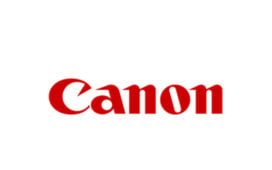By Ketaki Banga, COO, BPG Orange

Communication is key to how your business deals with the ongoing coronavirus crisis, whether or not you are currently impacted. No organisation or individual is immune to what is currently happening, and without established internal and external communications in place, people will feel confused and insecure, operational response will be hampered, and your brand could be impacted
In times of crisis, people look for action, direction and sound leadership. Your team and customers are counting on you to tell them what is happening, what is being done to address the issue, how long the situation will go on, and the steps being taken to reduce any direct impact.
Now, more than ever, people want brands to be honest, transparent and accountable. Which is why it’s critical that you talk to your people and customers, even if it means discussing the risks. Reassure them with real solutions you may be implementing to address the current challenges. It’s also important to demonstrate purpose by showing you are committed to making this better for everyone.
Here are a few simple things you can do to compassionately and confidently navigate your organisation’s communications through the Novel Coronavirus crisis:
Set up a crisis response team
Mobilise a cross-functional team of people from within your organisation. Every member of the team — from executive leadership down — should know who is doing what. Train the people involved in executing the plan to be sure they’re ready at a moment’s notice.
Develop key messaging in consultation with your communications teams
Your communications team should operate as your extended arm. It is essential to work closely with them so that you are aligned with developing and delivering your messaging internally and externally. Ensure that you have ready statements if a situation arises, supported by a robust operational response plan. Things to keep in mind:
- When communicating about COVID-19, prioritise people and safety first. How are you protecting and reassuring your employees and customers?
- Are there any experts and third parties you are working with, including government agencies?
- What are the next steps? How is your organisation ensuring business continuity while prioritising safety?
Develop a stakeholder communications strategy
A company’s messaging during a crisis should address all stakeholders. Create a complete overview of internal and external stakeholders and map your key messages to them, tailored to appropriate channels for each.
Use social media effectively
- People come first: No matter what services your company provides, remember to stay connected with your staff and customers through reliable communication channels.
- Be prepared: Your customers are expecting swift support in times of crisis, so be alert and responsive. Set up instant-reply messages with information you expect they will be looking for or connect with them in real time using social media.
- Offer support: Be prepared with a list of responses for questions your customers are likely to ask, and offer as much detail and reassurance as possible in your answers.
- Keep messaging consistent: Don’t stop building your brand. Remember, the crisis is only temporary, so continue building your brand through regular posts, but keep in mind the tonality and content, and ensure it is appropriate to the situation.
- Stay connected: Engage with customers through stories on Facebook and Instagram and share authentic content to engage with your community.
As we start adapting to what is the new normal, people and businesses will have to re-evaluate the way they operate and communicate. We’ve seen brands world-over announce measures to support those most affected during this difficult time.
For example, Ride-sharing company Gojek launched an initiative called ‘GoHeroes’ to support healthcare workers and medical professionals in Singapore. The company has partnered with hospitals to offer ride vouchers worth S$10 each, which can be distributed to staff over the next three months.
Alibaba and its founder Jack Ma announced that they will send 500,000 COVID-19 testing kits and 1 million masks to the U.S. This was after donating similar equipment to other impacted countries, including Japan, South Korea, Italy, Iran and Spain.
Close to home, the Government of Dubai announced an AED1.5bn ($409m) stimulus package with 15 initiatives for the retail, trade, tourism and energy sectors, including a 10 per cent discount on utilities bills and waivers on the down payment for trade license instalments.
Some brands have used clever marketing to engage with customers. Dubai’s Time Out temporarily rebranded itself as ‘Time In’ with a promise to offer a new way to experience the city as increasing numbers of local residents choose to stay at home.
As we start to adapt to a new way of commerce, engagement and society – either for a prolonged period of time or for a few weeks – communication will be key. There will be new needs that arise, new challenges to overcome and new opportunities for those with the vision to see them.
Throughout history, global events have shaped the way we lived and did business; the Roman Empire introduced roads, the World Wars sped up adoption of assembly lines, factory hours and industrialization, and the internet spread information (and disinformation). This is another one of those events.
To win in this new age, businesses and brands will need to be brave and let go of ‘the way we always did it’. It will be uncomfortable at times and there will be risks. But not adapting or preparing for change will be the greatest risk of all.









